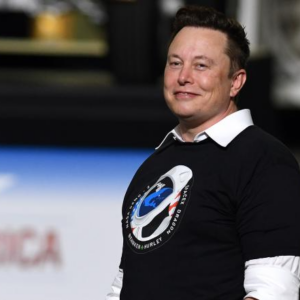Legacy Tesla HW3/AI3 car owners have been waiting for their turn to get the much better Autopilot Full Self-Driving (FSD) v13.
However, due to hardware acceleration limitations, Tesla (TSLA) is holding this update for HW3 cars. Till now, it’s clear that HW3 cars will need the promised free hardware retrofit to run FSD v13. Until then, the automaker is trying to give its HW3 car fleet at least some FSD OTA updates to keep the owners engaged.
Over the weekend, Tesla started rolling out FSD v12.6 (2024.45.25.10) to HW3 cars in the US & Canada. Interestingly, this time, Tesla started the FSD v12.6 rollout with Model S and Model X instead of Model 3 and Model Y (explanation and first impressions video below).
Scrolling through Tesla software tracking data on TeslaFi.com, no Model 3 or Model Y has received the FSD v12.6 (2024.45.25.10) OTA update as of this writing. Only Model S and X have received the update. The data on this website is collected from around 19,000 Tesla cars globally.
The FSD v12.6 update is rolling out a bit slowly. Until now, only 169 cars have it installed out of 19K and 15 are pending.
Tesla has posted some interesting release notes for the FSD v12.6 software update (read below) as the automaker brought some features from FSD v13 to this trimmed-down version for HW3 cars.
This rather looks like a limited release. Tesla will wait for feedback from early testers and reviewers first before beginning a wide release. It can take a couple of weeks before FSD v12.6 rollout goes out to a wider user base.
FSD v12.6 (2024.45.25.10) Official Release Notes
End to End on Highway
Improved City Streets Behavior, which reduces false slowdowns and improves obstacle avoidance
Customizable Speed Profiles, which apply to roads and highways with 50 mph (80 k/h) or higher speed limit
Earlier and more natural lane change decisions
Redesigned controller for smoother, more accurate tracking
Max Speed Update, where Autopilot determines the suitable speed within your allowed limit
In November last year, Tesla released the ‘End to End on Highway’ on neural net feature to HW4/AI4 cars. Tesla AI development team somehow scaled it down for the HW3/AI3 vehicles in the FSD v12.6 update.
Other features like Speed Profiles, earlier more natural lane changes, and Max Speed Update are also imported from FSD v13.
FSD v12.6 First Impressions
Early access beta tester and Tesla YouTuber Black Tesla was one of the first ones to get the FSD v12.6 on his HW3 Model X SUV. He also owns an HW4 Tesla Model S Plaid with FSD v13.
Owning vehicles with both the newer and older AI computers gives him a distinct advantage of drawing comparisons between both builds.
On Elon Musk’s social media platform, he posted the pros and cons of FSD v12.6 after testing it. He wrote:
PROS:
Highway End-to-end is the game changer
Overall, it’s smoother than 12.5CONS:
Still has a lot of 12.5 DNA so phantom braking, twitching turns, and inability to slow down for sequential speed bumps are still prevalent.
Think of it as v13 lite and temper expectations except for highway which is world’s better than 12.5.
FSD v12.6: Why Model S and X First?
During his first impressions drive on his HW3 Model X, Black Tesla pointed out an important change Tesla has made with the FSD v12.6 update. As we mentioned earlier, Model S and X vehicles are the first ones to get FSD v12.6. Usually Model 3 and Model Y are first in line.
Model 3 and Model Y vehicles form the majority of the Tesla fleet globally. Therefore, Autopilot FSD AI is mostly trained on video data from these smaller vehicles. Model S and X are wider and larger, so Autopilot Vision struggles a bit to adjust to these larger vehicles.
This time, Tesla rolled out FSD v12.6 to Model S and X to first collect video and driving conditions data. This will give Tesla Vision AI a chance to train for comparably larger vehicles. Let’s watch the video review.



